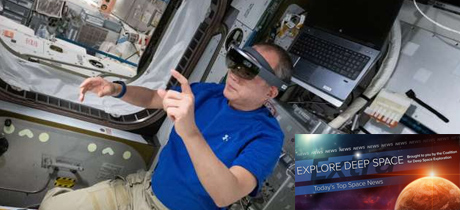In Today’s Deep Space Extra… Administrator Bill Nelson to lead a NASA leadership town hall regarding human space exploration. The VIPER rover will land on the western edge of Nobile Crater near the Moon’s South Pole.
Human Space Exploration
NASA “town hall” meeting and media briefing with update on human exploration plans, sept 21, 2021, virtual, 12:00 pm et & 2:30 pm et
SpacePolicyOnline.com (9/20): NASA Administrator Bill Nelson will lead an agency leadership town hall on Tuesday regarding the agency’s human spaceflight programs, projects, and activities on Tuesday at Noon, EDT. The town hall will be aired on NASA TV and streamed on www.nasa.gov/nasalive with a news briefing following at 2:30 p.m., EDT. The event was announced by NASA on Monday.
NASA picks landing site for VIPER lunar rover
SpaceNews.com (9/21): NASA announced yesterday that its Volatiles Investigating Polar Exploration Rover (VIPER) will head to the western edge of Nobile Crater, near the Moon’s south pole. The site met several criteria for being chosen as the landing place, including good communication with the Earth and a spot where enough of the sun’s rays reach to keep the rover going. VIPER is equipped with a drill designed to probe up to a meter below the surface to detect and quantify water ice. That analysis can support future human missions that could use the ice for life support and propellant. VIPER is scheduled to arrive at Nobile Crater in late 2023.
NASA plans to spend up to $400 million on commercial space stations. It’s evaluating about a dozen proposals from companies
Coalition Members in the News – Axiom Space, Boeing
Business Insider (9/20): NASA plans to award $400 million in contracts to up to four companies to pursue private space station development, anticipating the agency will become one of many tenants aboard future free flyers. About a dozen companies have responded to a NASA request for proposals, according to Phil McAlister, NASA’s director of commercial spaceflight.
Astronauts use Augmented Reality to repair Space Station equipment
Futurism (9/20): The International Space Station (ISS) is providing astronauts with an opportunity to assess how future colleagues on missions far from Earth might deal with complex repairs using Augmented Reality (AR). Augmented Reality headsets are enabling astronauts on the ISS to fix instruments or equipment without relying on experts on the Earth. The programming or instructions can be accessed with headsets donned by the astronauts. The current ISS commander, Japan’s Akihiko Hoshide, demonstrated the potential to repair a treadmill, or piece of exercise equipment used by the ISS crew to maintain aerobic health.
Space Science
Mars was always too small to hold onto its oceans, rivers and lakes
Space.com (7/20): A new study suggests that Mars was too small as it formed long ago to retain the oceans, rivers and lakes that formed initially. The loss of Mars water and atmosphere can be attributed to the loss of its magnetic field, according to a University of Washington in St. Louis research effort based on findings from NASA’s Curiosity and Perseverance rover missions.
Other News
China’s cargo craft docks with space station core module
Xinhuanet of China (9/20): China’s Tianzhou-3 cargo spacecraft launched and docked with the Tianhe space station core module on Monday in just under seven hours. The supplies are to support the upcoming Shenzhou-13 crew of three astronauts aboard the station for a six-month stay. Editor’s note: Xinhuanet is a Chinese state-run news source
L3Harris’ missile-tracking satellites pass early design review
Coalition Member in the News – L3Harris
SpaceNews.com (9/20): L3Harris announced yesterday that the Space Development Agency has approved the company’s proposed design for a missile tracking satellite. The agency in October selected L3Harris and SpaceX to each produce four missile-tracking satellites that will be part of a larger constellation of space infrared sensors that will detect and track hypersonic and ballistic missiles from low Earth orbit.

